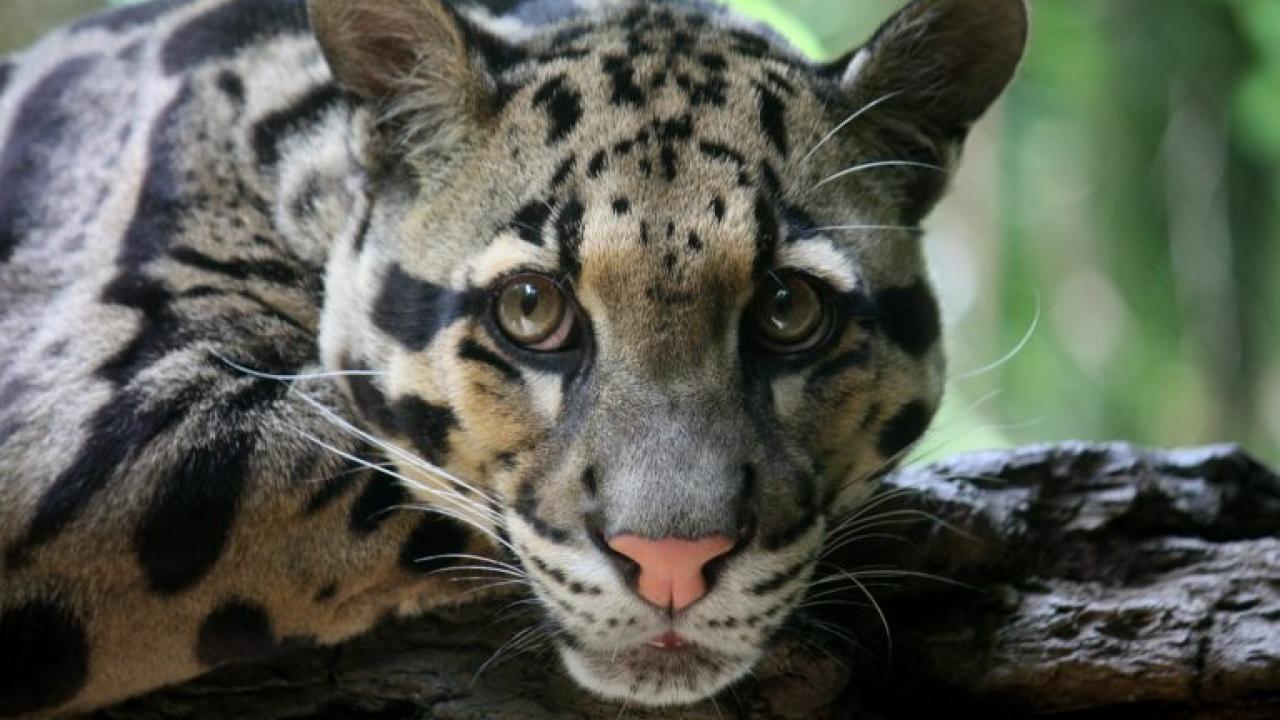
Sequencing Puts Carnivore Chromosomes in Context
Studies comparing animal genomes generally focus on the DNA sequence itself. A new study by researchers at the University of California, Davis shows how the three-dimensional scaffolding of chromosomes is related across several species of carnivores, offering a new approach of “comparative scaffotyping” that could be used to identify related genes across species and place them in context. The work, published the week of Feb. 21 in Proceedings of the National Academy of Sciences, also shows the power of large collections of genomes such as the Earth BioGenome Project.
The clouded leopard was one of 11 carnivore species included in the study showing that chromosome structure is conserve across big cats, bears and dogs. (Credit: Nashville Zoo)
Researchers Marco Corbo, Joanna Damas and Professor Harris Lewin at the UC Davis Genome Center and Department of Evolution and Ecology, with Madeline Bursell at Brigham Young University and the Smithsonian Institution, used a technique called called Hi-C or chromatin conformation capture sequencing to identify the three-dimensional shape of areas of chromosomes in 11 species of carnivore from three families. They were: clouded leopard, leopard, tiger, cheetah and puma; dingo, African wild dog and red fox; black bear, polar bear and grizzly bear. The research drew on data from the DNA Zoo, affiliated with the Earth BioGenome Project.
Chromosomes are made up of chromatin, which includes both proteins and DNA. The structure of chromatin is organized at multiple levels: DNA itself can form loops; these can be organized into topological associated domains; these domains form into compartments; and finally compartments form territories within the chromosome.
Conserved chromosome structure
This Hi-C analysis looked at arrangements at the chromosome compartment level. It shows which genes are physically close to each other in three-dimensional space in the cell nucleus. Being physically close can affect how genes are turned on or off, even if they are relatively distant in terms of DNA sequence.
The team found that for genes that are orthologous, or related by descent, the 3-D chromatin structures were highly conserved both within and across the three families of carnivores, despite 50 million years of evolution and chromosome rearrangements. This suggests that these conserved chromosome structures are coding for important genome functions.
The authors call this approach of comparing three-dimensional structures in chromosomes “Comparative scaffotyping.” The approach could make it easier to identify related genes across groups of animals and plants and place them in their correct context.
Launched in November 2018, the goal of the Earth BioGenome Project is to provide a complete DNA sequence catalog of all 1.8 million named species of plants, animals and fungi as well as single-celled eukaryotes.
Media Resources
- This story was originally posted on the UC Davis Egghead Blog
- Conservation of chromatin conformation in carnivores (PNAS)
- Earth BioGenome Project Begins Genome Sequencing in Earnest
- Earth BioGenome Project
